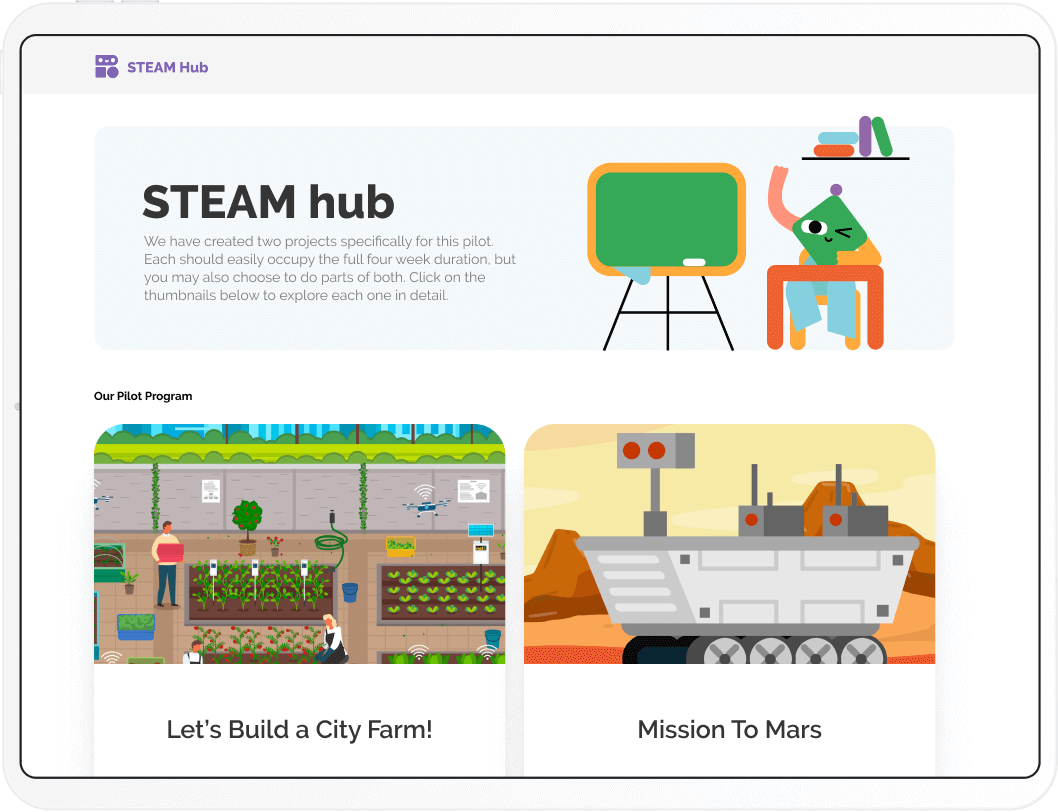
Digital citizenship: how to feel at home on the web
.png)
Being a full-fledged digital citizen takes some effort and education. Good thing that’s exactly what Robo Wunderkind offers to students in our curriculum. So what does digital citizenship mean and how do we achieve it?
Technology and the internet are wonderfully powerful tools with lots to offer us. They allow us to communicate across continents, educate ourselves, express ourselves, or, to create with digital tools. But while they giveth, they also taketh. Digital citizenship is an important element that helps to make the best out of technology in a responsible way.

It’s easy to lose yourself on the internet, to waste your time with modern technology, to become addicted to its numerous features. Our generation was thrust into the open unknown waters without a manual or guide. We’ve learned a lot – mostly on our mistakes. Now we know that the use of technology will only grow and that coding, programming and creating technology will all belong to the basic skill set of future generations. That is why we need to help them understand digital citizenship and how to be mindful with technology. At Robo Wunderkind, we try to incorporate this into the essence of our lessons, because it is just as important as learning how to code or how to build a robot.

A digital citizen is someone who uses the internet regularly and effectively. It’s engaging confidently and positively with digital technology. It’s a safe and responsible relationship to technology that allows us to be productive consumers, to create technology while we consume it, and to use it purposefully. It is something we encourage with the Robo Wunderkind lessons.

These are the basic elements of digital citizenship:
- Digital Access: digital technology must be accessible to everyone. Those who are disadvantaged in terms of access to technology should have this access granted via digital educational. Educators play a key role – including those at Robo Wunderkind.
- Digital Commerce: the use of money in the digital space is a tedious business and students must be taught how to handle their sensitive commercial data responsibly.
- Digital Communication: the exchange of information is the primary purpose of digital technology. Children must be taught how to express themselves online effectively; and that the web can help them find a voice.
- Digital Etiquette: high standards of conduct are a vital element of online civility and must be encouraged from an early age.
- Digital Fluency: includes the understanding of terms such as ‘fake news’ and their distinction from real news, identifying a good online source, etc.
- Digital Health and Welfare: although the digital world is a source of entertainment, physical and psychological wellbeing of children online should be of concern to every educator. Screen time, avoiding bullying, accessing appropriate content – those are all vital parts of it.
- Digital Law: the digital realm is governed by its own rules of which its users should be aware. Children should know about how they are protected (i.e. against bullying, sexting, etc.) as well as what they can and cannot do online.
- Digital Rights and Responsibility: children should be educated about the opportunities as well as the potential problems that can arise in the digital sphere, and taught to inform adults once these problems arise.
- Digital Security and Privacy: whether it’s a virus or someone looking to invade their trust, children need to learn how to protect their privacy, that some might try to take advantage of their vulnerability, and what to do once this happens.
In short, this could be summed up by two terms:
- Respect for oneself, for others and for one’s (and others’) property.
- Responsibility for oneself, for others and for one’s (and others’) property.

By encouraging these types of behaviors in childhood, we at Robo Wunderkind are teaching kids to use technology and the internet in a self-regulated, responsible and mindful way. Shielding children from technology in an attempt to protect them will only make them more vulnerable in the long-run. Digital citizenship can only be achieved through appropriate education.
In Robo Wunderkind lessons, we use screens in order to allow children to program and control their robot. But the lessons are still dominated by physical play, building physical objects for a specific purpose, taking them apart, trying out how the different parts fit together, and so on. The screen is a tool, not the purpose. We thus teach them that technology can be a tool of creation, a tool that makes their creations come alive and lets them control real-life objects.

We create real tangible objects with the help of digital technology. Children are encouraged to socialize with it, to use it for a good purpose, and the time they spend with a screen is limited and purposeful. We are aware that later on, they will be exposed to more screen time and that this is inevitable. But once they do, they will have learned what good it can do.

Take a look at the Robo Wunderkind curriculum to learn more, and visit our blog for more ideas on education & STEM learning.
“
Love What You’re Reading?
Subscribe to our newsletter to get more just like it, sent straight to your inbox.
Gefällt Dir, was du liest?
Melde dich für unseren Newsletter an, um weitere Informationen direkt in deinem Posteingang zu erhalten.














.png)
%20(1).png)

